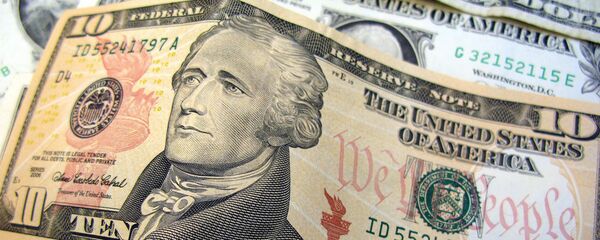However, despite hitting a three-month low, unemployment claims are still at a match for June's gains in new jobs, while demonstrating very modest contractionary dynamics.
Adding to the barely encouraging landscape, US manufacturing continues to struggle in the stronger dollar-cheaper import environment, with factory activity persistently weak.
Overall, as the "rising tide lifts all boats" concept is becoming increasingly irrelevant in the assessment of the economy's health, strong projected growth in GDP in Q2, to be reported next week, hardly reflects the full picture.
Initial unemployment claims declined by a seasonally-adjusted 1,000 to 253,000 last week, according to a report by the Labor Department. Previous expectations projected an increase to 265,000 based on the dismal corporate profits figures, and modest gains in consumption.
As observed by the Labor Department, employers continue to seek a qualified workforce, while low layoff levels indicate a better outlook and stronger employer confidence.
"Demand for labor is high," Jacob Oubina of New York-based RBC Capital Markets LLC said. "We're not likely to see a material increase in the trend for layoffs."
The four-week moving average of jobless claims indicated a drop of 1,250 to 257,750. The Labor Department noted that "there were no special factors impacting this week's initial claims", however, at this time of the year many US automotive manufacturers temporarily decommission their assembly lines for retooling, potentially affecting the job market dynamics.
However, the ending economic cycle in the US might trigger a snap in the moderately positive job market developments. That is, not to mention the view of a broader recession looming.
"Our forecast has been, and remains, for a profit-squeeze-related labor market slump to intensify very late this year and then to develop further in 2017," Joshua Shapiro of Maria Fiorini Ramirez, Inc. said. "It is evident that a slowing in the pace of job gains has already begun."
Meanwhile, a separate report indicated that the US manufacturing is struggling, with factory activity in the Mid-Atlantic region having contracted in July thus far, yet the gains in new factory orders and shipments might suggest a slightly brighter outlook.
The new orders measure advanced to 11.8 in July, compared to last month's —3.0, while shipments rose to 6.3 from —2.1 in June. However, the Philadelphia Federal Reserve's business index dropped to —2.9 from 4.7 in June, giving a contradictory picture.
In a survey, only 22 percent of companies reported gains in activity (compared to 25 percent in June), while 51 percent said activity has remained at the same level.
With all that being said, while the government is likely to announce 2Q16 GDP growth at 2.6 percent, an acceleration from the last quarter's 0.6-1.1 (revised) percent, there is not much evidence to support the view as inflation is still subdued, and gains in the dollar's FX rate are likely to have longer-term negative effects on the domestic prices index.






